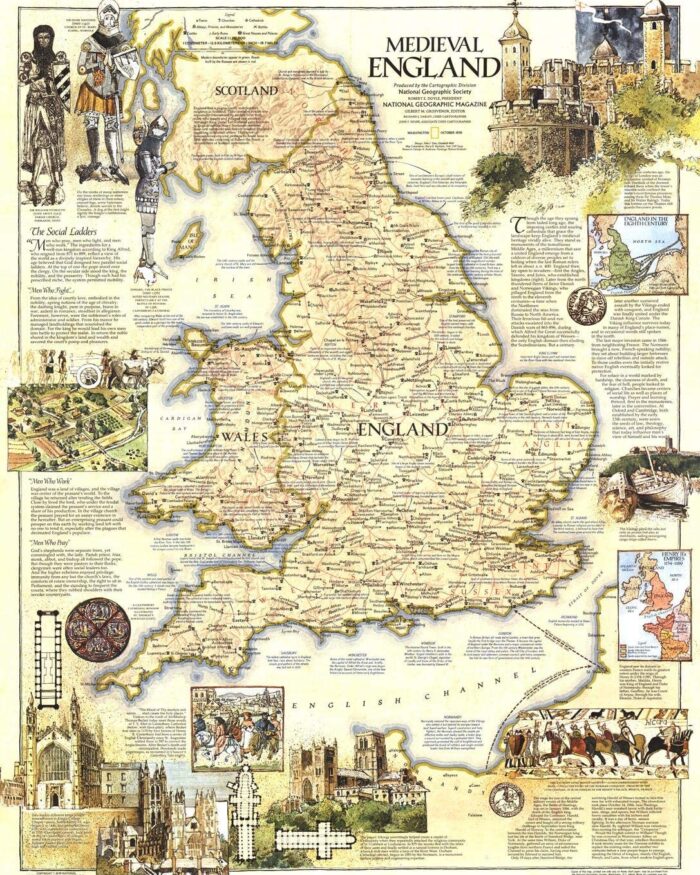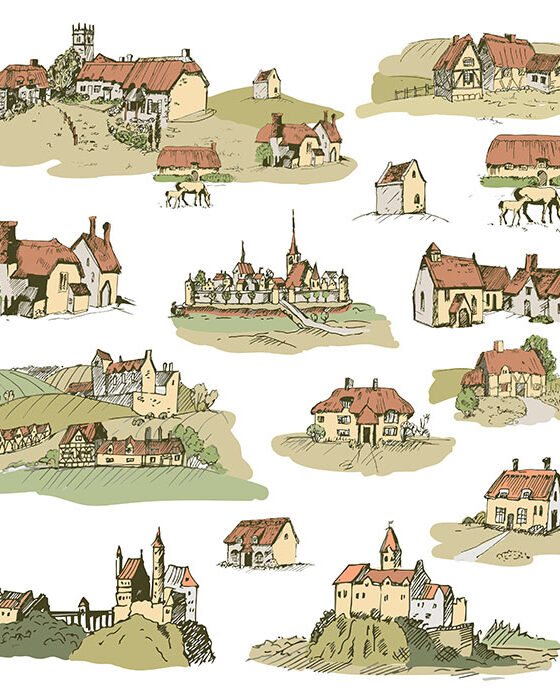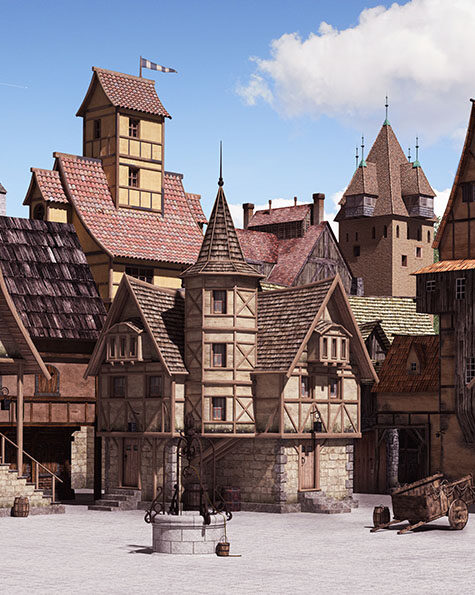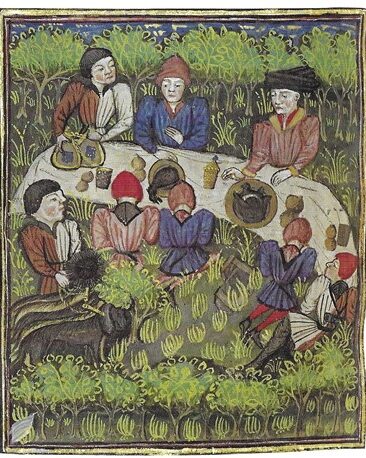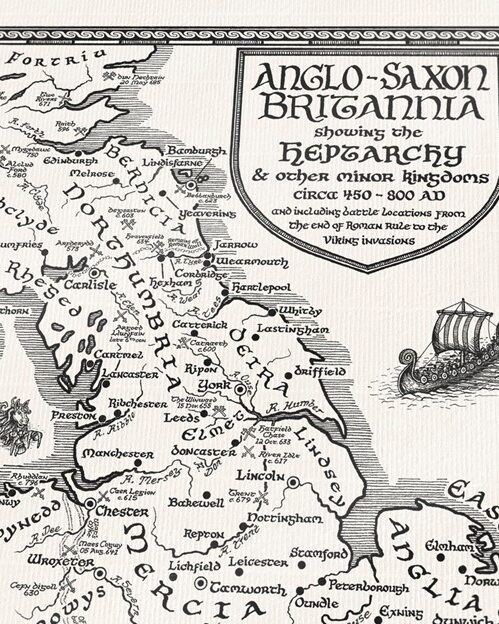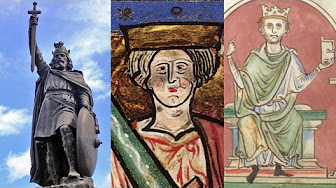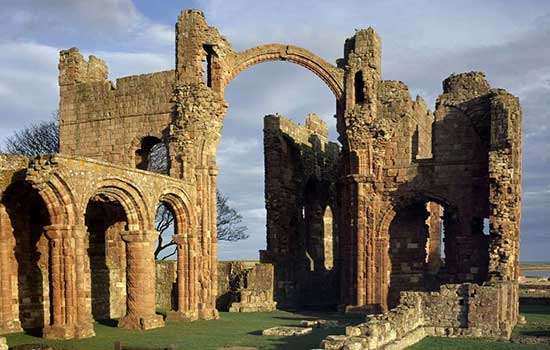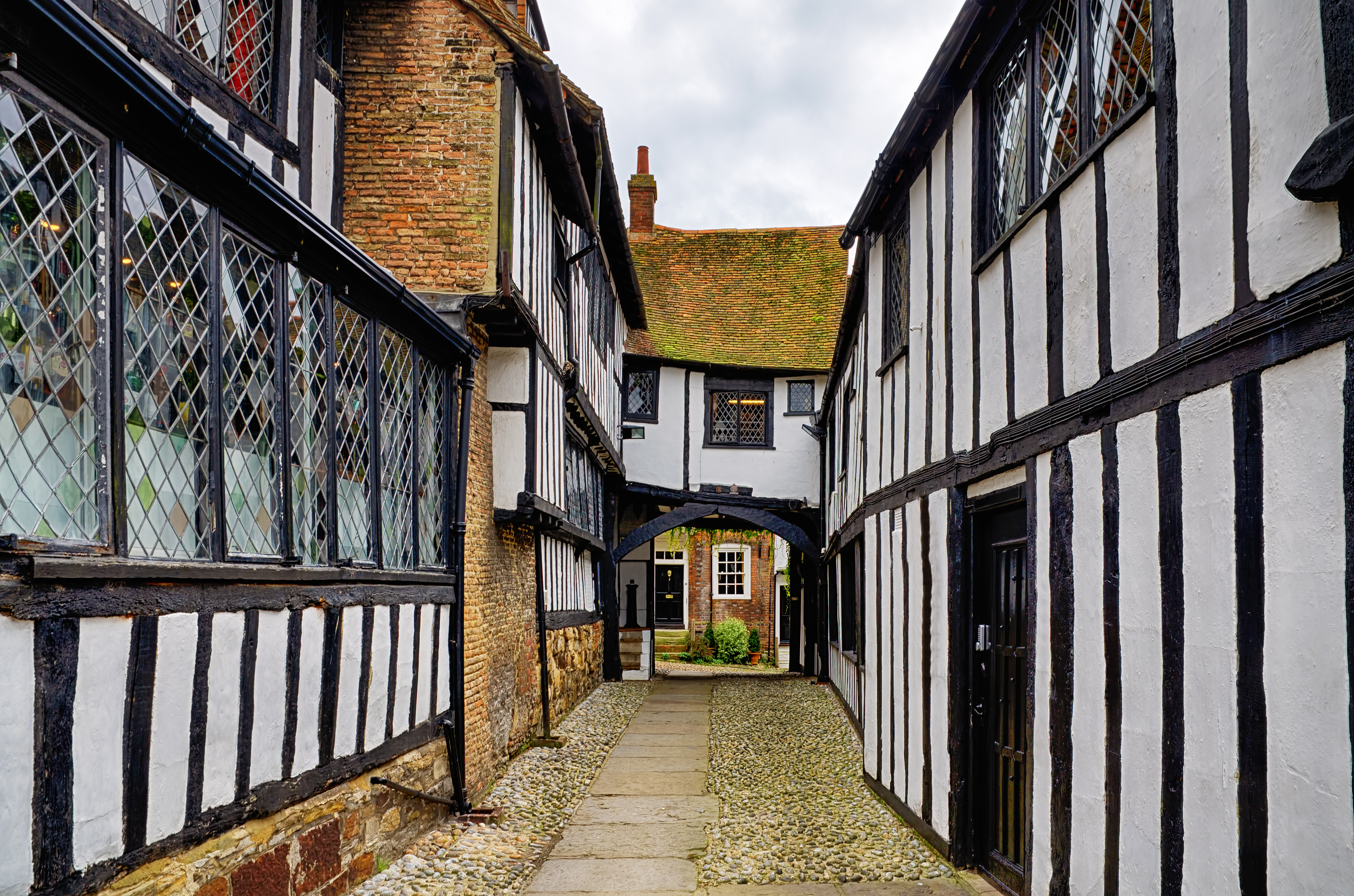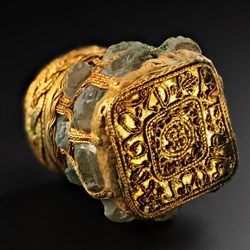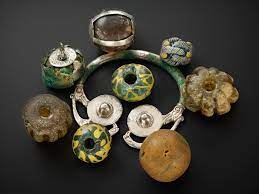King Edgar Achieves Peace, Stability, and Prosperity
Edgar (also spelled Eadger), birth 943/944 AD/crowned King of the Mercians and Northumbrians in 957, King of the West Saxons or Wessex in 959, reckoned as King of all England from 959/death 975 at age 31/spouse(s), Æthelflæd, Wulfthryth, Ælfthryth
House: Wessex/Father, Edmund I/Mother, Ælfgifu of Shaftesbury
Children: Edward the Martyr, Edith of Wilton, Edmund, Æthelred the Unready
Reign: King of the English 959-975
If Eadwig represented the worst of England’s kings, his brother Edgar (943-975 AD) represented the best and quickly repaired the damage Eadwig had done. Crowned in 959 at the age of sixteen, he reestablished relations with the nobles and clergy his brother had alienated and rebuilt the political unity lost when his brother was king. One of the many ways he eased tensions built up during his brother’s reign was reinstating the extremely popular advisor to previous kings, St Dunstan, who Eadwig had banished. St Dunstan would go on to become the Archbishop of Canterbury and put forward the goal of monastic reform. Following his ideas, all secular clergy were removed from their posts and replaced with monks. New bishops and priests were appointed; and a good deal of land passed into the ownership of the Church, increasing its wealth and power. Around forty monasteries were founded and many of the monasteries destroyed during Viking raids were rebuilt. With King Edgar’s investment and a respite in Viking raids, monasteries were of increasing cultural importance. Works such as Regularis Concordia (c. 970-973), which aimed to provide a universal code of practice for English monasteries, are of great artistic and intellectual value. Additionally, illuminated manuscripts, metalwork, painting, and poetry are art forms that blossomed during King Edgar’s reign, earning the suggestion that it was a ‘Golden Age’ for the Anglo-Saxons.
Because there were no recorded conflicts while he was king, Edgar is known as ‘Edgar the Peaceful.’ It was this absence of war that allowed him to focus his time in making progress in accelerating England into a secure state instead of a group of rival kingships and entities who existed outside of the general law. Edgar’s reign marked the rise of diplomacy as opposed to war as a strategy to maintain power. He worked alongside the thanes, ealdorman, government nobles, and the church to unite the kingdoms and allow everyone to prosper. On the advice of St Dunstan, Edward was coronated at Bath in 973 AD, the first of such ceremonies described in detail in the annals of English history. St Dunstan argued that England required these ceremonies because the French and the Germans held coronations in high regard when electing their own kings and emperors. All future coronations of English kings, up to the present day, have been based on Edward’s.
Following his coronation, Edgar travelled north to Chester, where he held court in a palace in a place now known as Edgar’s Field near the old Dee bridge in Handbridge. There he met with eight sub-Kings of Britain whom he had summoned. Among them was Kenneth, King of Scots and his son Malcolm, King of the Cumbrians; Maccus, king of several isles; and five others, named Dufnall, Siferth, Huwall, Jacob, and Juchill. In a demonstration of the power of Wessex, Edgar was rowed up the River Dee to the Monastery of St. John the Baptist by all eight sub-Kings, attended by a great concourse of nobles. The entire occasion represented an assertion of Saxon supremacy over the Celts of England, Scotland, and Wales.
Edgar’s personal life was not always above reproach. As a sixteen-year-old boy, he married his childhood friend Ethelfleda Eneda, who would give birth to Edward ‘the Martyr.’ However, he later seduced Wulfrith of Wilton in 961 AD, bringing her from the nunnery at Wilton Abbey to his residence Kemsing, near Sevenoaks in Kent. King Edgar would later refuse to wear his crown for seven years, at the suggestion of St Dunstan, as penance for this crime. Soon after the birth of their daughter who would become St Edith, Wulfrith returned to Wilton Abbey.
The following year, Edgar heard of another great beauty, Aelfthrith (or Ælfthryth) the daughter of the Devonshire Thegn, Ordgar. He sent his foster-brother, Ealdorman Aethelwold of East Anglia to check her out but the young man found her so stunning that he secretly married her and settled in distant Devon. Hearing that his foster-brother had married, but not to whom, the King insisted the newlyweds visit him at Court. Discovering Aethelwold’s duplicitous nature, Edgar took him out hunting in Harewood Forest (Hampshire) and thrust a javelin through his back! He then married Ælfthryth in 965. Ælfthryth was a powerful political figure in her own right and the first woman crowned queen alongside her king. This protocol and the ceremony involved with it became the template for all married royals going forward and has remained that way ever since.
King Edgar died on 8th July AD 975 and was buried in Glastonbury Abbey (Somerset) where he was revered as a saint.

Glastonbury Abbey

